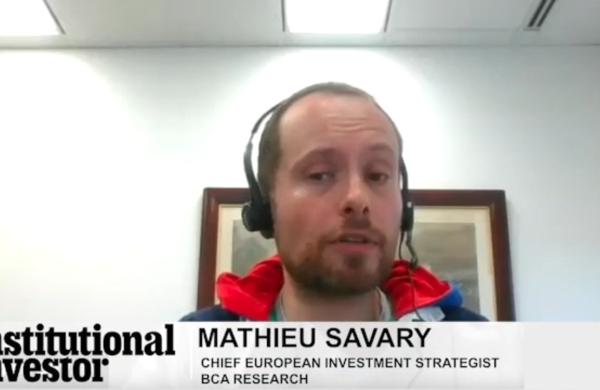Last year, a complex set of new rules introduced with the European Market Infrastructure Regulation (EMIR) came into effect to regulate collateral management for the USD 700 trillion over-the-counter (OTC) derivatives market1 and provide mandatory initial margin requirements for both centrally-cleared and non-centrally cleared transactions. (Since OTC derivatives are traded outside a central exchange, they are exposed to more counterparty risk.)
The new measures, which will continue to go into effect through 2016, are expected to have broad and far-reaching implications for asset managers, pension funds, brokers/dealers, banks and institutions that participate in global derivatives markets.
“It will be a bumpy road until the transition from bilateral over-the-counter trading shifts to an exchange-traded, centrally cleared environment envisaged by the regulators along with great challenges to overcome but also opportunities for the organisations who can react and change strategy swiftly.” says Bilgehan Aydin, Head of Collateral Solutions at Commerzbank from his office in Frankfurt.

An international web of regulatory bodies and legislation has been behind the push to regulate the market. Institutions include the Basel Committee on Banking Supervision (BCBS) and the International Organisation of Securities Commissions (IOSCO), in consultation with groups like the Committee on Payment and Settlement Systems (CPSS) and the Committee on the Global Financial System (CGFS). In the U.S., the Dodd-Frank Wall Street Reform and Consumer Protection Act called for similar new measures to regulate derivatives trading, among other market activity, to avert another crisis.
This new market reality is likely to impact virtually every aspect of how OTC derivatives are reported, but with emphasis on collateralisation and mobilisation: How much collateral must be stored, when it needs to be posted, how it is allocated and managed, and how assets are mobilised to cover obligations across multiple jurisdictions and trading venues. For financial institutions, the challenge is to have additional liquidity on hand to meet margin requirements that exceed current practises and demand.
In short, the amount of asset collateral held against OTC trades will increase, along with the cost of trades. The benefits to organisations involved in derivatives, however, will be gaining a company-wide understanding of total assets and obligations, securing the technology and infrastructure necessary for compliancy and efficiency, and having the right collateral pools in the right market at the right time. The payoff is not just regulatory compliance, but greater cost efficiency and bottom-line performance.
Still, questions remain. “Regulators are trying to improve the robustness of the market and reduce systemic risk,” says Aydin “The question is, on the back of the new regulations, will there be enough collateral in the system and will it be mobile enough to fulfill the additional requirements?”
The call for additional collateral – an estimated USD 4 trillion will be required under the new regulations over the next several years 2 – comes as markets grow increasingly global and interconnected. In the past, a portfolio could be secured by collateralising its replacement cost. Now, regardless of which counterparty has the better rating, both sides in a bilateral trade will be required to post more collateral to offset liabilities when they are operating in different jurisdictions and time zones.
For this reason, collateral will have to be more mobile than it has been. “If you have your collateral locked away in different pockets and you don’t have ready access to it, then you definitely will have a problem in the market,” Aydin explains. “You need to be able to manage collateral across cleared and uncleared transactions. That means knowing exactly what you have, where you have it and how quickly you can move it and utilise it as optimally as possible.”
Managing and mobilising collateral through the maze of international mandates can be facilitated by partnering with a financial institution such as Commerzbank and Bilgehan Aydin’s Collateral Solutions department, which also provides clients with the expertise, tools and services to comply with the new regulations and optimise their assets.
“The challenge for organisations that are not professional market-makers is that they haven’t had to deal with the complexity of pricing derivatives or have the necessary capabilities—the collateral management tools, the infrastructure, the people and optimisation engines,” Aydin points out. “You need to find a partner who can actually look into your liquidity requirements and so enable you to transform your available assets, optimise them against your liability, and have the operational capability to take over the full administration related to collateral management.”
Where Commerzbank can also be of service is in offering state-of-the-art IT architecture that would be costly and time-consuming for companies to develop on their own, especially in light of the coming deadlines. The bank is partnered with ClearStream, an international clearing and settlement organisation, and Deutsche Börse Group. Together, they offer TradeCycle, an end-to-end trade and collateral management solution that allows clients to outsource components of the post-trade process and meet needs for cost efficiency, risk management, improved return on assets and regulatory compliance.
As risks diminish under the new regulations, so may profits. But Aydin sees a silver lining. “I think the new regulations are going to force organisations to take the right kind of risk for the right kind of return,” he says. “They are going to be heavily questioned about their business models, sustainability and risk-taking. Ultimately, they are going to know their liabilities and how they can best utilise and optimise their assets and the liquidity they have.”
1Bank for International Settlements, Dec. 2014
2BIS-CGFS Papers no 49 Asset encumbrance, financial reform and the demand for collateral assets, May 2013
By Bloomberg Custom Content
Please note that some of the services described here are not available to investors in Asia and the U.S. For more information about our solutions, please contact Market Services at Commerzbank.
Take control of market uncertainty — view Commerzbank's risk management solutions.





